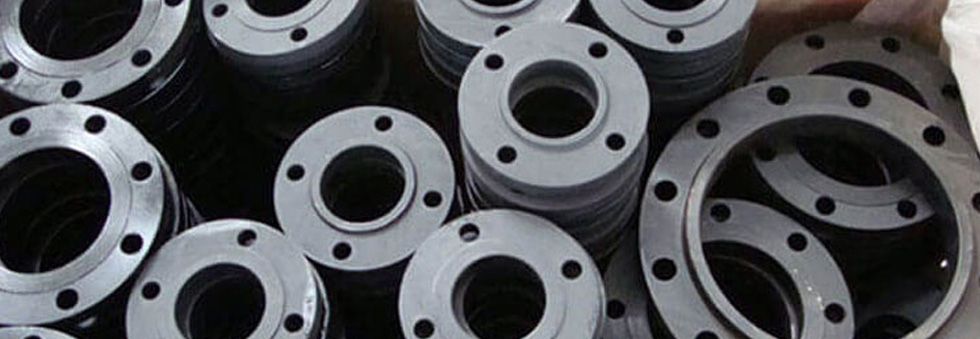Different Grades And Functions of Carbon Steel Flanges

Iron (Fe) and carbon steel are the primary components or ingredients used in the production of carbon steel flanges. Connectors are flanges. They have two or more apertures that allow pipes to be connected to valves, pressure vessels, pumps, and other devices. Carbon steel is available in a variety of grades due to variations in carbon content. Every grade has a different carbon content ratio and hence different characteristics. ASTM A105, ASTM A182, ASTM A694, ASTM A516, ASTM A350 are the most often used grades for carbon steel flanges. Carbon content in this group of grades varies between 1% and 2.1 percent by weight.
Let's take a closer look at the general characteristics of different Carbon Steel Flange grades:
ASTM A105 Carbon Steel Flanges: ASTM A105 Carbon Steel Flanges are suitable for use as valves and fittings in high-pressure pipelines. Flanges made of carbon steel, ASTM A105, can endure high temperatures. They're constructed of carbon steel that's been forged. They can withstand temperatures ranging from 0 to 550 degrees Celsius. They have a lot of uses in maritime engineering. They may be found in power plants, nuclear power plants, gas equipment, valves, petrochemical plants, heat exchangers, and the oil and gas sector, among other places.
ASTM A350 Carbon Steel Flanges: Carbon Steel A350 Flanges are in high demand because of its outstanding durability, strength, resistance, and temperature tolerance. A350 Flanges give optimal machinability after hardening. Forging and normalizing processing procedures can help improve the machinability of A350 Carbon Steel Flanges. These flanges are both leak-proof and extremely strong. They are inexpensive. A350 flanges have an advantage over flanges manufactured of other austenitic steels due to their lower cost.
ASTM A694 Carbon Steel Flanges: This carbon steel grade is noted for being extremely stress-reliant. It has strict requirements for the flow of liquids and gases at extremely high pressures. As the carbon concentration in this type of carbon steel rises, it becomes heavier. It has a lower ductility. If adequate heat treatment is not provided, A695 carbon steel loses its weldability.
There are a number of different carbon steel grades to be aware of:
ASTM A694, F42, F46, F48, F50, F53, F60, F56, F65, F70.
ASTM A350 LF1, LF2, CL1, CL2.
ASTM A105N
ASTM A516 55, 60, And 70 plate grades